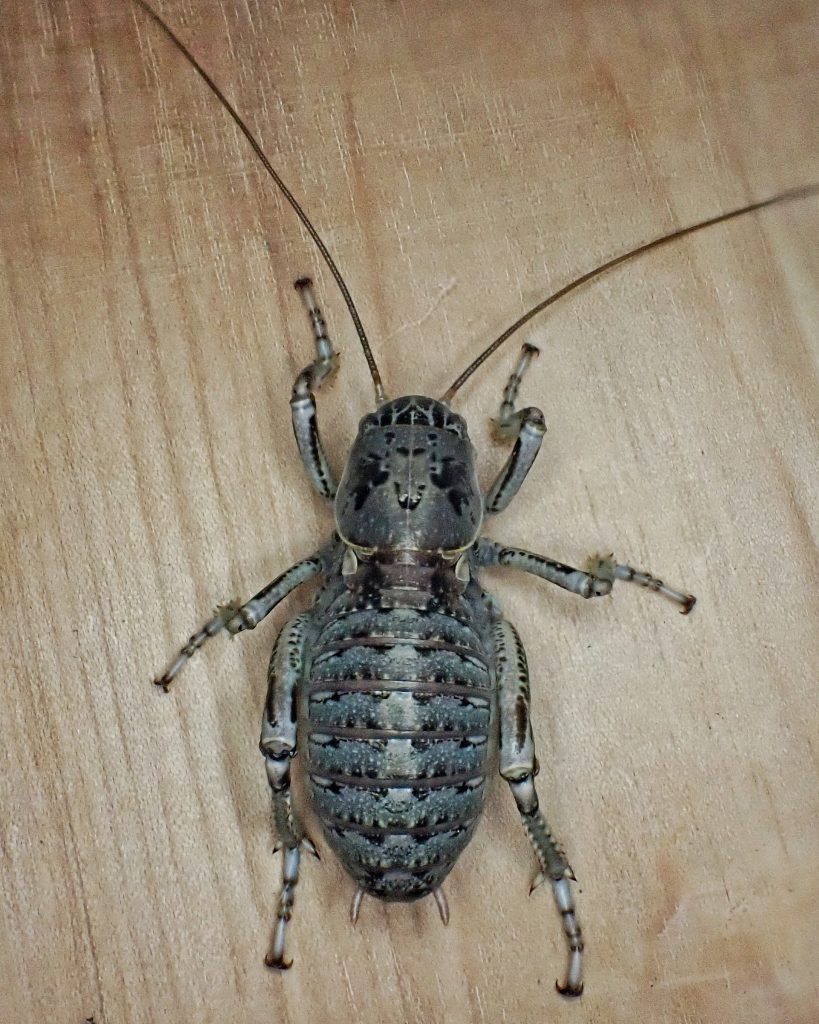
I should have been expecting to find these hump-winged crickets (family Prophalangopsidae) when I set up my lights in a wet meadow in the Gifford-Pinchot NF at the end of August. But I had not read up on their habitat, and even if I had I was, at that time, too conifer ignorant to know that I was right in the middle of the Lodgepole Pine/Mountain Hemlock/Engelmann Spruce habitat that they favor. And now that I do know these things I’m more surprised that only only one of them came and visited me at the lights, since all three of those trees were abundant.
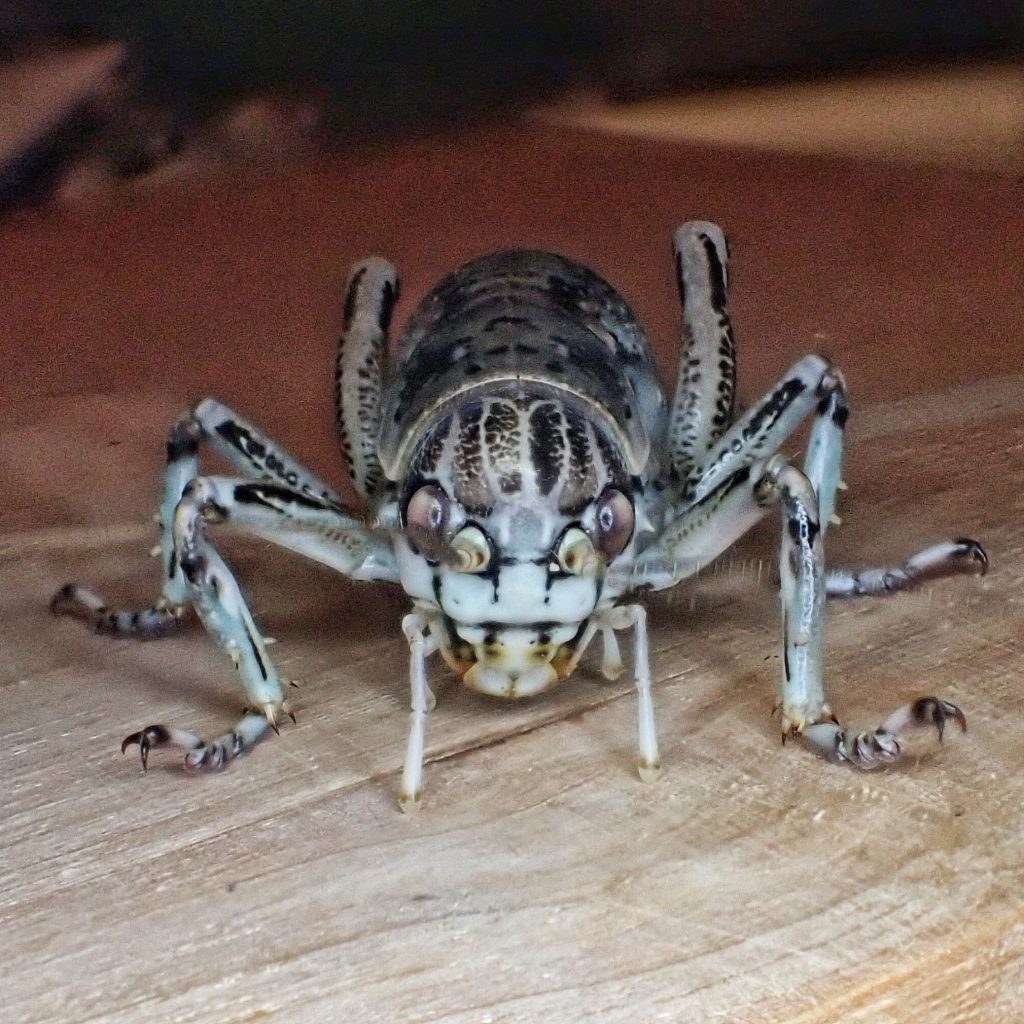
Prophalangopsidae is an ancient family, having diverged from the lineage that led to katydids at least 230million years ago. It used to be a species rich family, but there are at least 90 extinct species in 47 genera represented in the fossil records, and only 7 species in 5 genera that are still extant. The one our Great Grig belongs to, Cyphoderris, is only found in northwestern North America, and only contains 3 species, leaving the other genera (all of which are in Asia) with only a single representative.
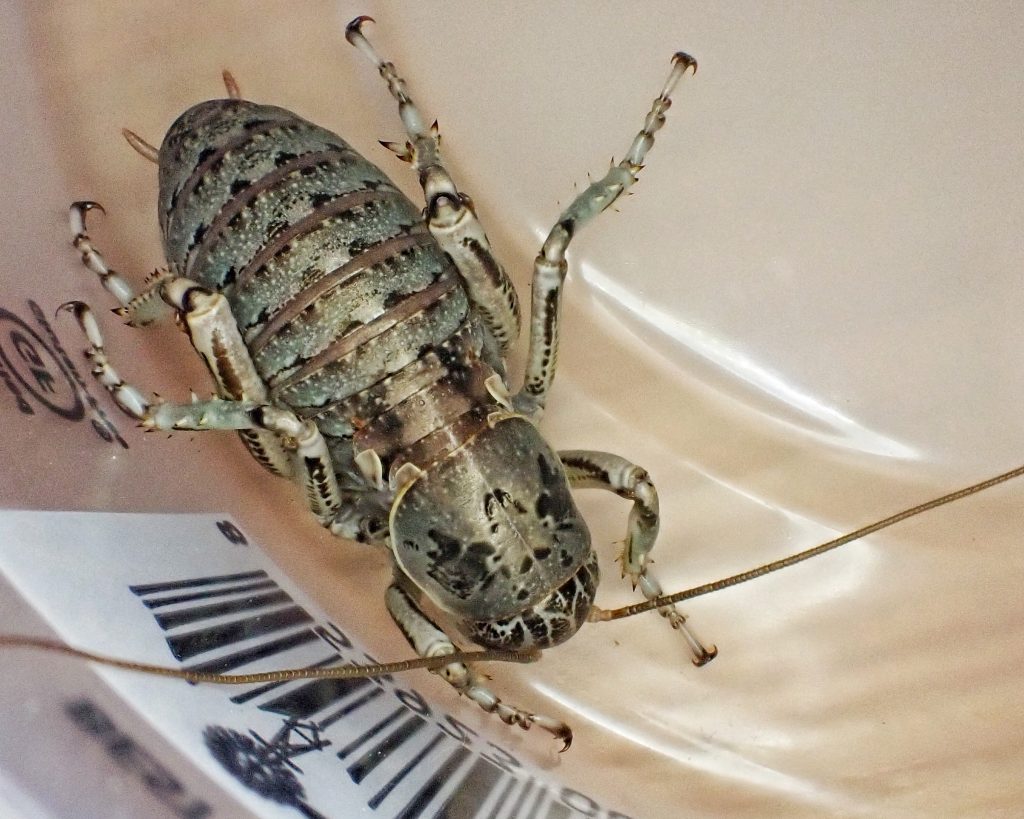
Like most orthoptera, male grigs ‘sing’ to attract a mate, and like crickets and katydids they do so by rapidly rubbing a hardened section (the scraper) of one forewing against the toothed section (the file) of the other forewing. Both forewings have a file and a scraper, and they can, and do, switch orientation periodically. They usually play these concerts from a perch in a tree at least 15’ above the ground. Females who are attracted to the song climb to the singing male. And then it gets kinda kinky, because the female actually mounts the male, and begins eating his fleshy, hemolymph filled hindwings! This serves to distract her while he connects reproductive organs with her and passes along a spermatophore (sperm packet). In addition, once mating is over, he leaves her with a spermatophylax, a nutritious package of carbohydrates and proteins.
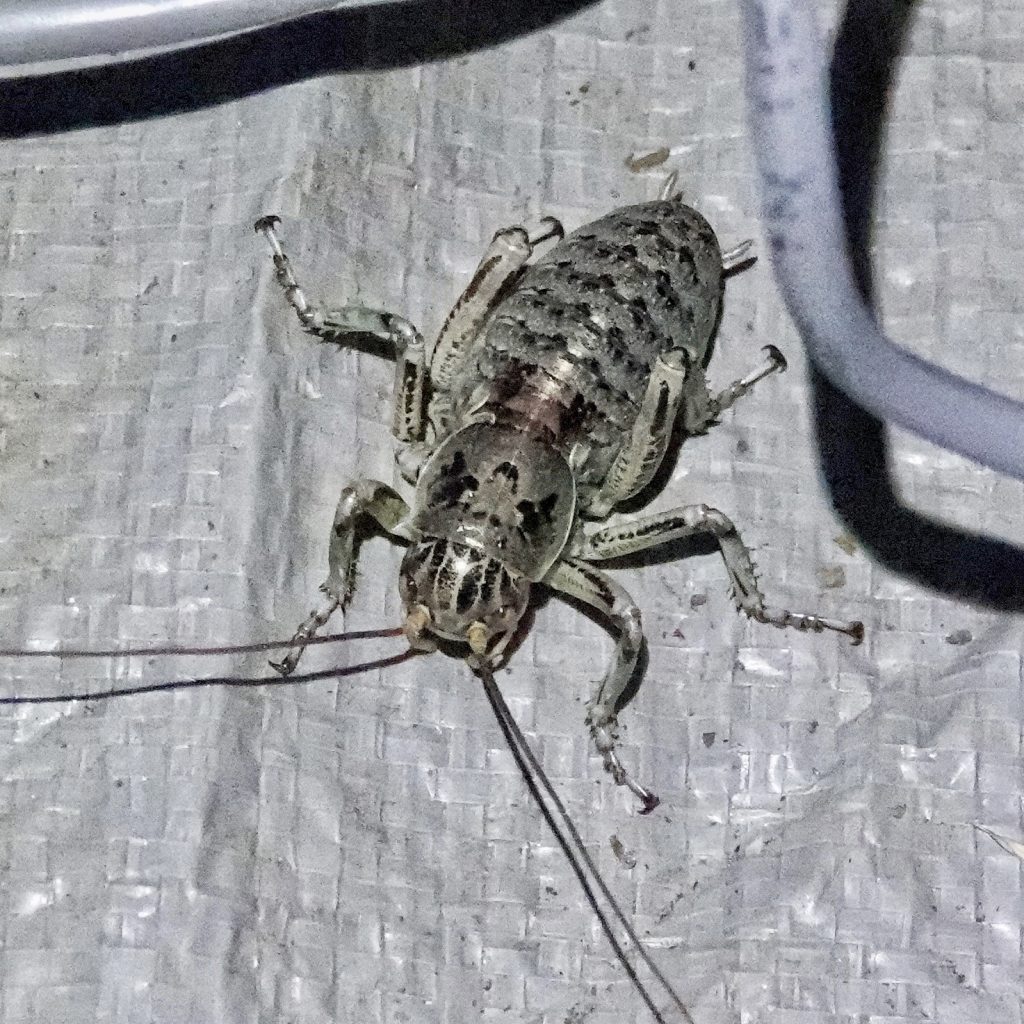
These two meals serve the dual purpose of keeping her occupied (and therefore not mating with other grigs) while his little swimmers try to make it to the promised land, and providing her with the nutrition necessary to produce strong and healthy eggs. Males may mate more than once (although studies have shown that females prefer ‘virgin’ males), because lack of those hindwing delicacies doesn’t inhibit their ability to still play the same tune, and once a female climbs aboard they can lock onto her (with a mechanism called a gin trap) and transfer their spermatophore, before she realizes that they no longer have a nuptial gift. Hopefully they still offer the deceived female a spermatophylax for her troubles.
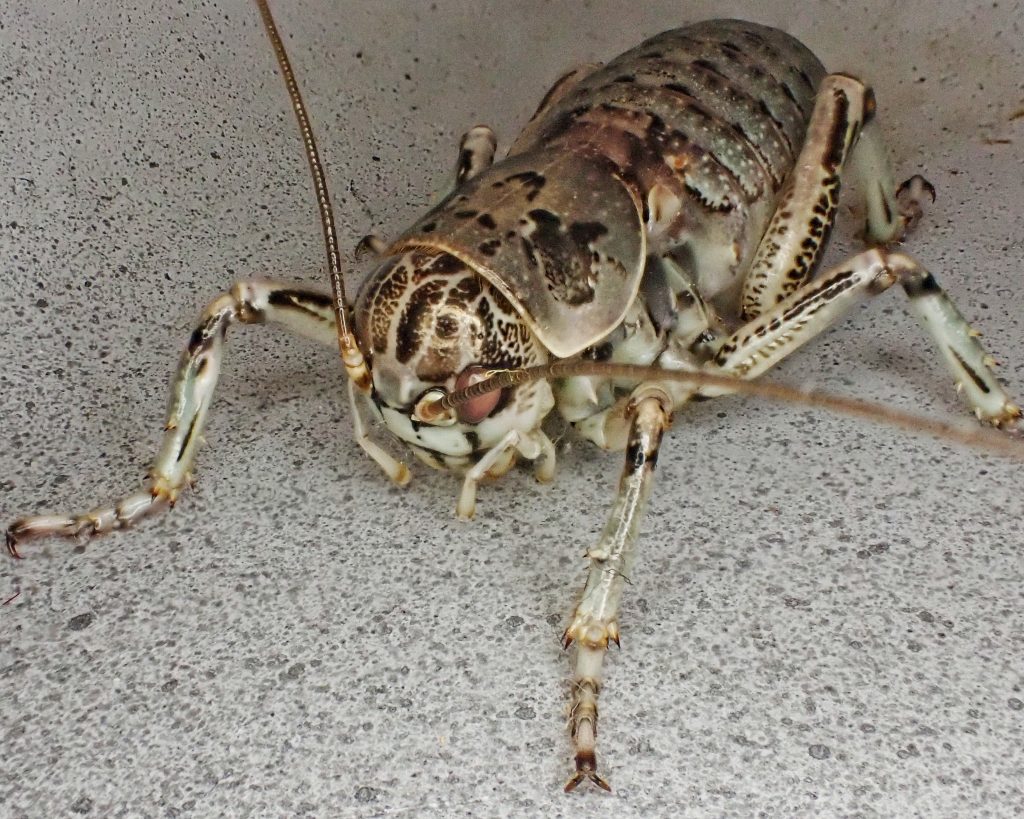
Both nymphs and adults spend their days hiding under cover or in burrows. When threatened they often just drop to the ground if they are suspended on vegetation. If they are further threatened they flip onto their backs and extend their legs to present a bigger form, and jab at the intruder with their front legs and strong mandibles, which are capable of inflicting an effective, defensive bite. Males usually quit singing around midnight.
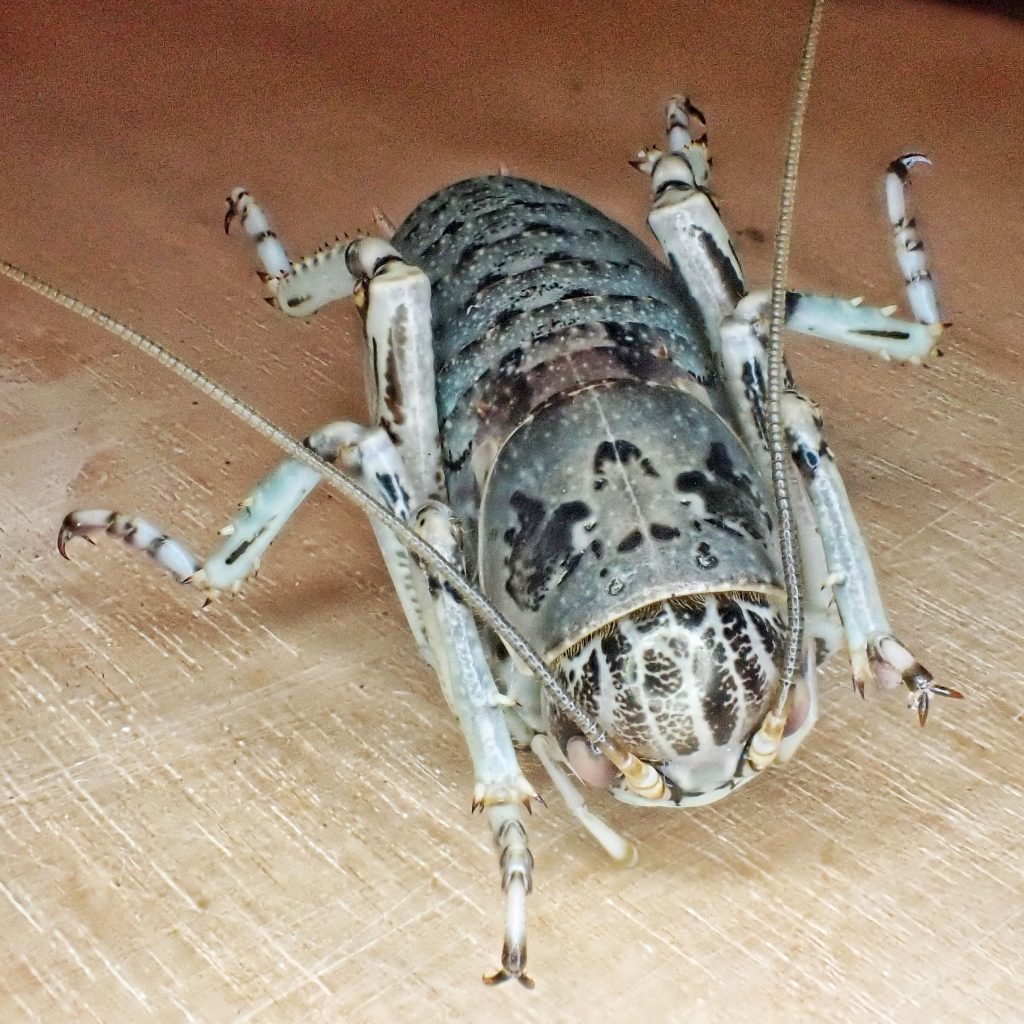
Overwintering is in the late instars of the nymphal stages, and since they often live in very cold country they have developed means to survive frigid temps. According to this study (Toxopeus et al.; 2016) they can survive being frozen at 20⁰F for up to 5 days, but do not survive even a few hours at 10⁰F. However, since they overwinter below ground, and there is usually a cover of snow, they probably are not exposed to temperatures below 25⁰F very often. They are also variable in their freeze resistance, and can apparently increase the glycerol levels in their hemolymph in response to the first frosts of fall.
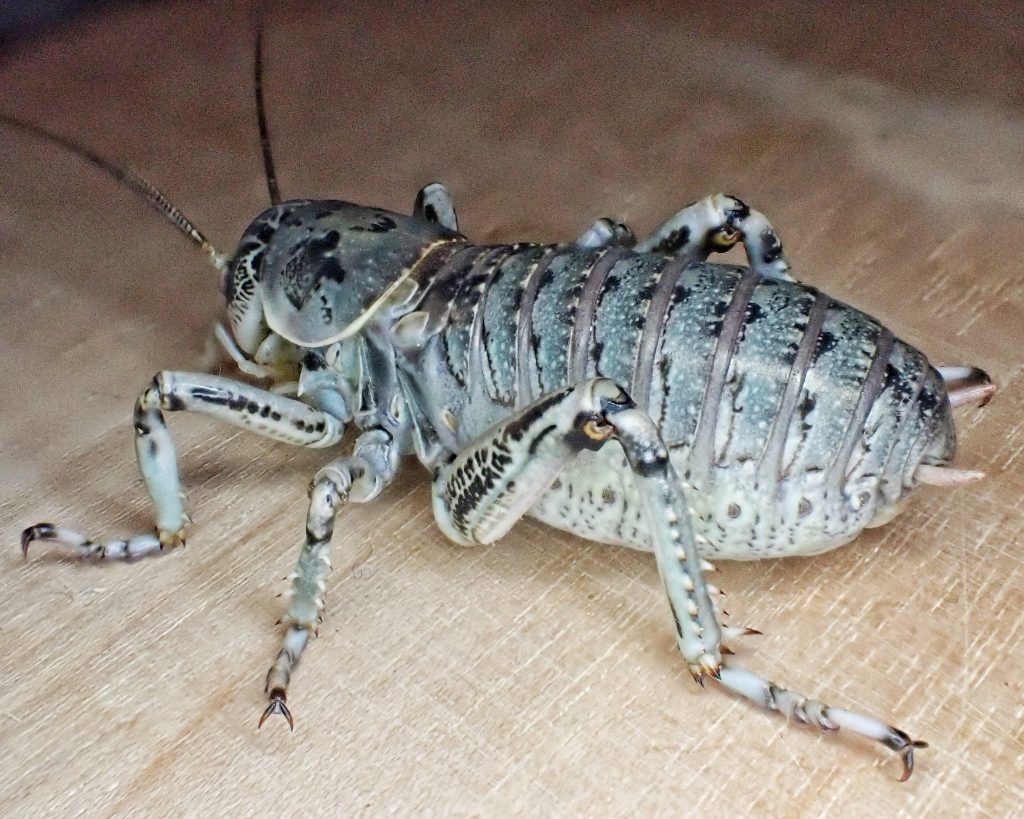
Description-Large (20-30mm long), stout tan to grey bugs with black, yellow, and pink markings; large pronotum covers the rear of the head; legs are relatively short, and well armed with spikes; ventral body and legs light tan to light grey; males have short wings that are humped; females have no wings, or only stubs; long antenna are separated and arise from the middle of the face.
Similar species-In areas of range overlap for Cyphoderris sp., examination of male subgenital plate is required for a positive identification, as shown here; Cyphoderris buckelli is smaller (17-26mm) and is found in se BC, eastern edge of Washington, ne Oregon, n Idaho, nw Montana; C. strepitans is smaller (17-26mm) and is found in high altitude sagebrush meadows in the Rockies; Jerusalem Crickets (Ammopelmatus sp) are yellow orange and brown; katydids have antenna arising from the top of their face.
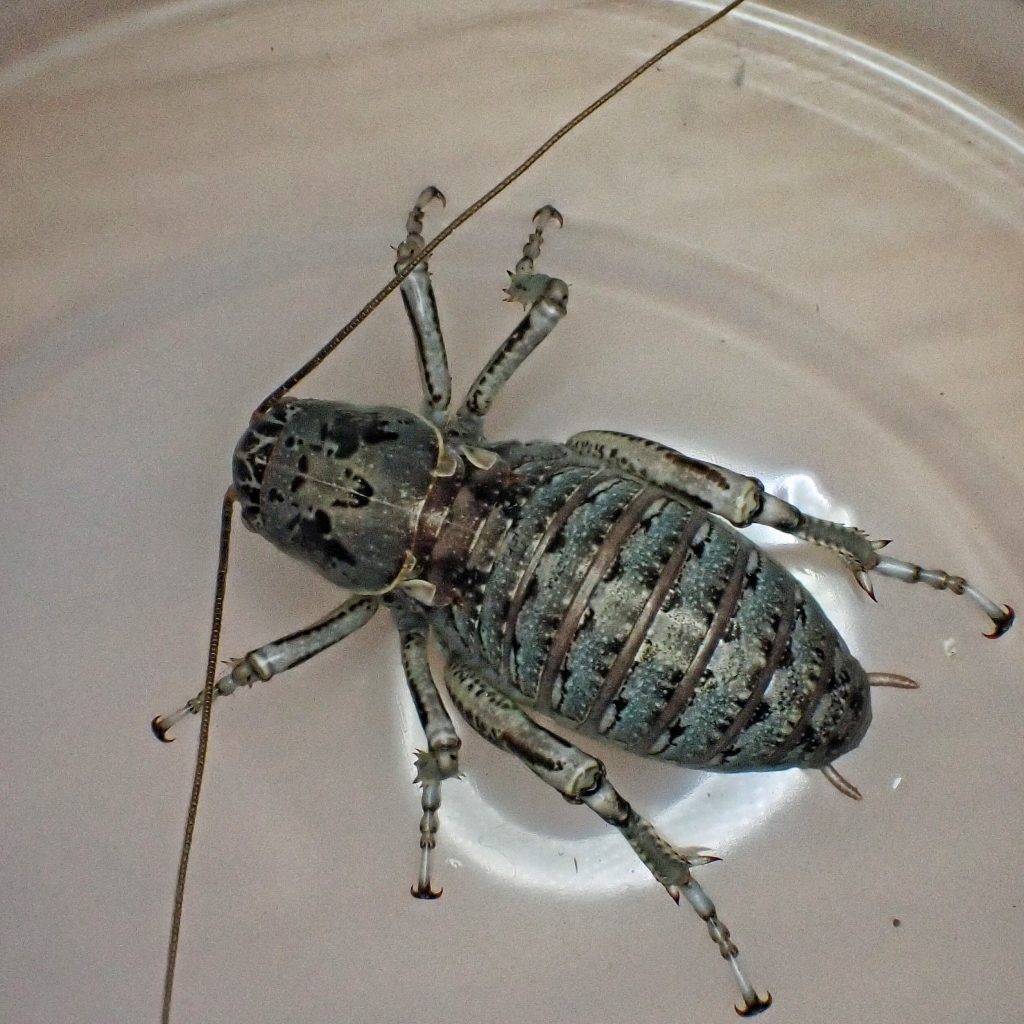
Habitat-Most common in montane areas containing Lodgepole Pines, Mountain Hemlock, Engelmann Spruce, balsamroot, and western serviceberry, but may also be found just outside the boundaries of these areas, as well as in forests containing only some of these components.
Range-Northwestern North America; region wide in appropriate habitat
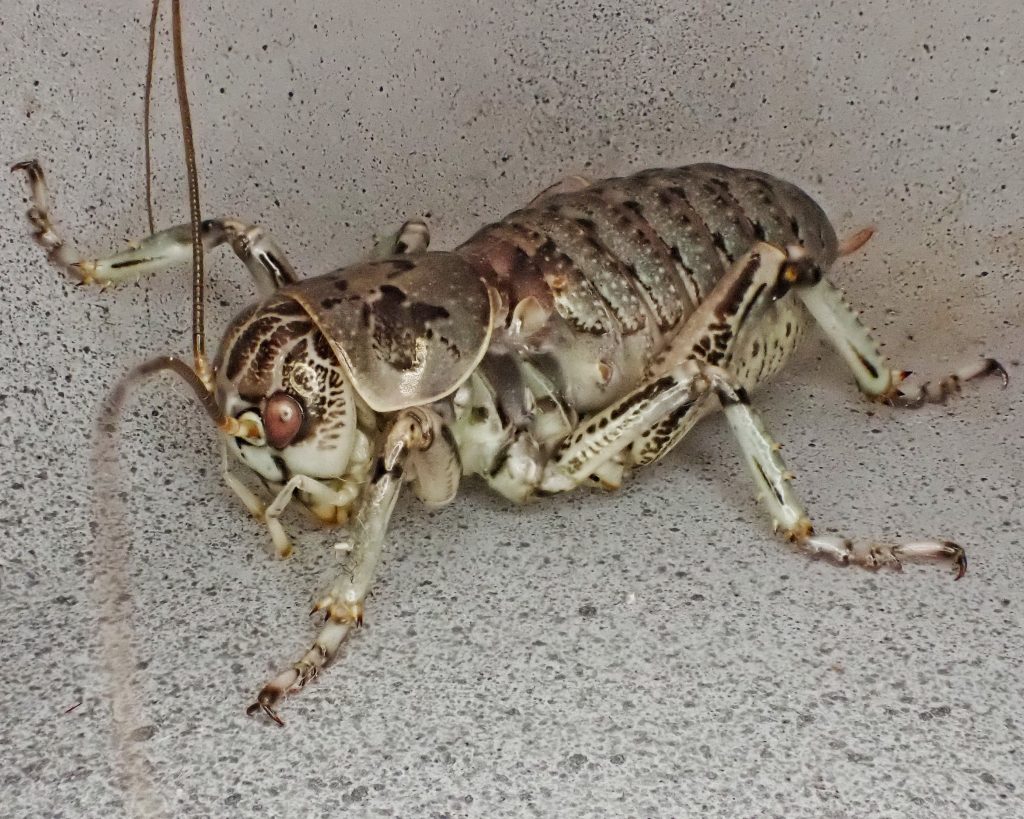
Eats-Both adults and nymphs feed on staminate cones of conifers, as well as pollen and flower parts of shrubs and wildflowers, especially balsamroot (Balsamorhiza) and serviceberry (Amelanchier alnifolia).
Eaten by-Probably any insectivore lucky enough to find, and strong enough to subdue, one of these large bugs.
Adults active-Nocturnal; June into September
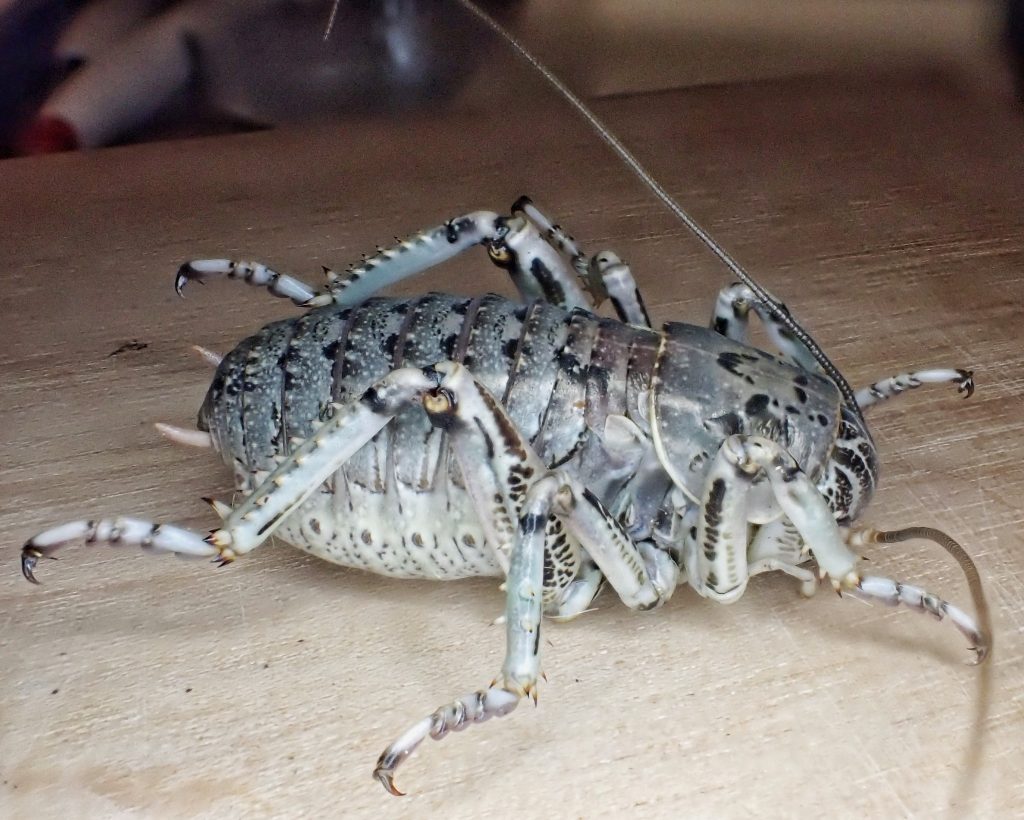
Life cycle-Eggs are probably deposited en masse under leaf litter, logs, and small stones, though they may be laid inside burrows; females may oviposit multiple times, laying up to 50 eggs each time; it appears that nymphs require about 9 months to reach maturity, and it is in the late nymphal instars that they overwinter in diapause, since adults are not known from winter; eggs laid late in the year may not hatch until the following spring.
Etymology of names–Cyphoderris is from the Greek words for ‘bent’ and ‘covering’, and refers to the humped wings of the males. The specific epithet monstrosa is from the Latin word for ‘monster’, referring to both their large size and their rather monstrous appearance.
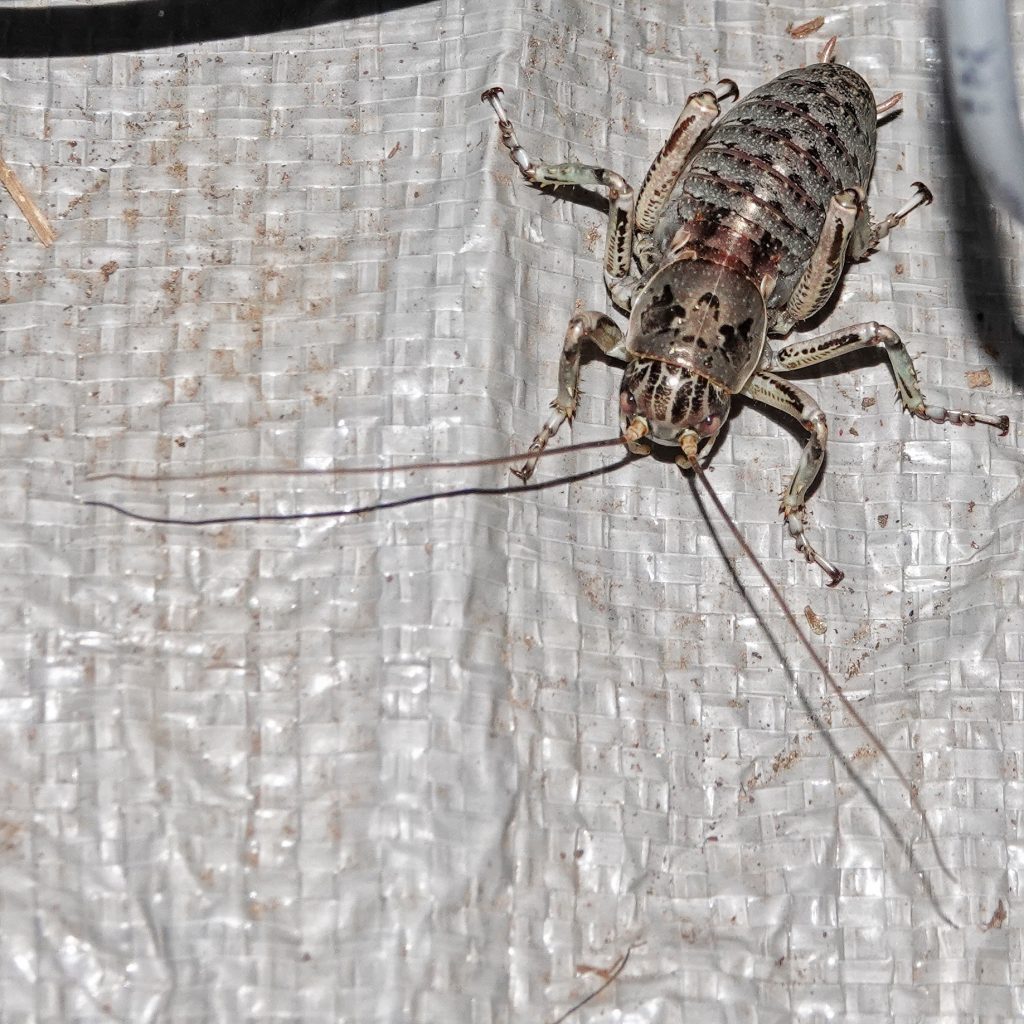
A song of ancient Earth – The Smaller Majority
Species Cyphoderris monstrosa – Great Grig – BugGuide.Net
Sci-Hub | CYPHODERRIS MONSTROSA UHLER IN BRITISH COLUMBIA (ORTHOPTERA) | 10.4039/Ent55225-10
https://orthsoc.org/sina/339a.htm
Sci-Hub | CYPHODERRIS MONSTROSA. | 10.4039/Ent3317-1
Great Grig – Montana Field Guide
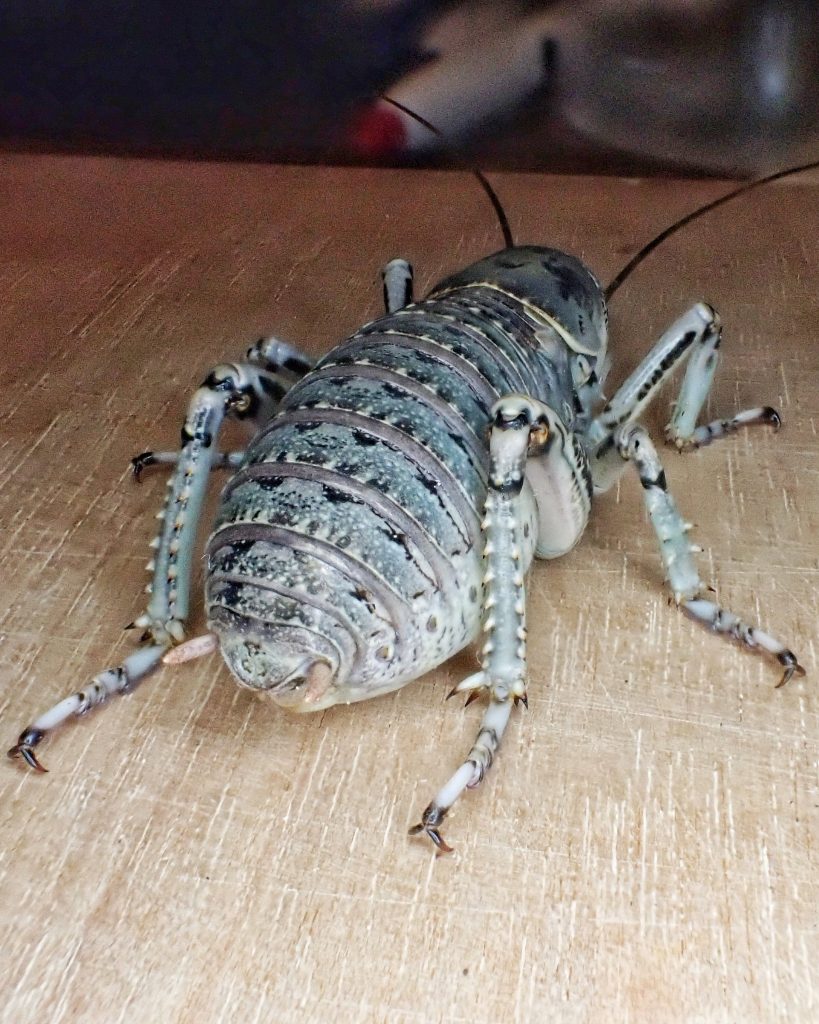
I think I found one of these when pulling weeds on Newport, washington. It came up with the root still alive. I thought it was a murder hornet, so I killed it. I feel bad now, unsure if that’s what it was. I wish I could send a pic so you could see it. It’s mostly covered in dirt, but you can still make out distinctive parts.